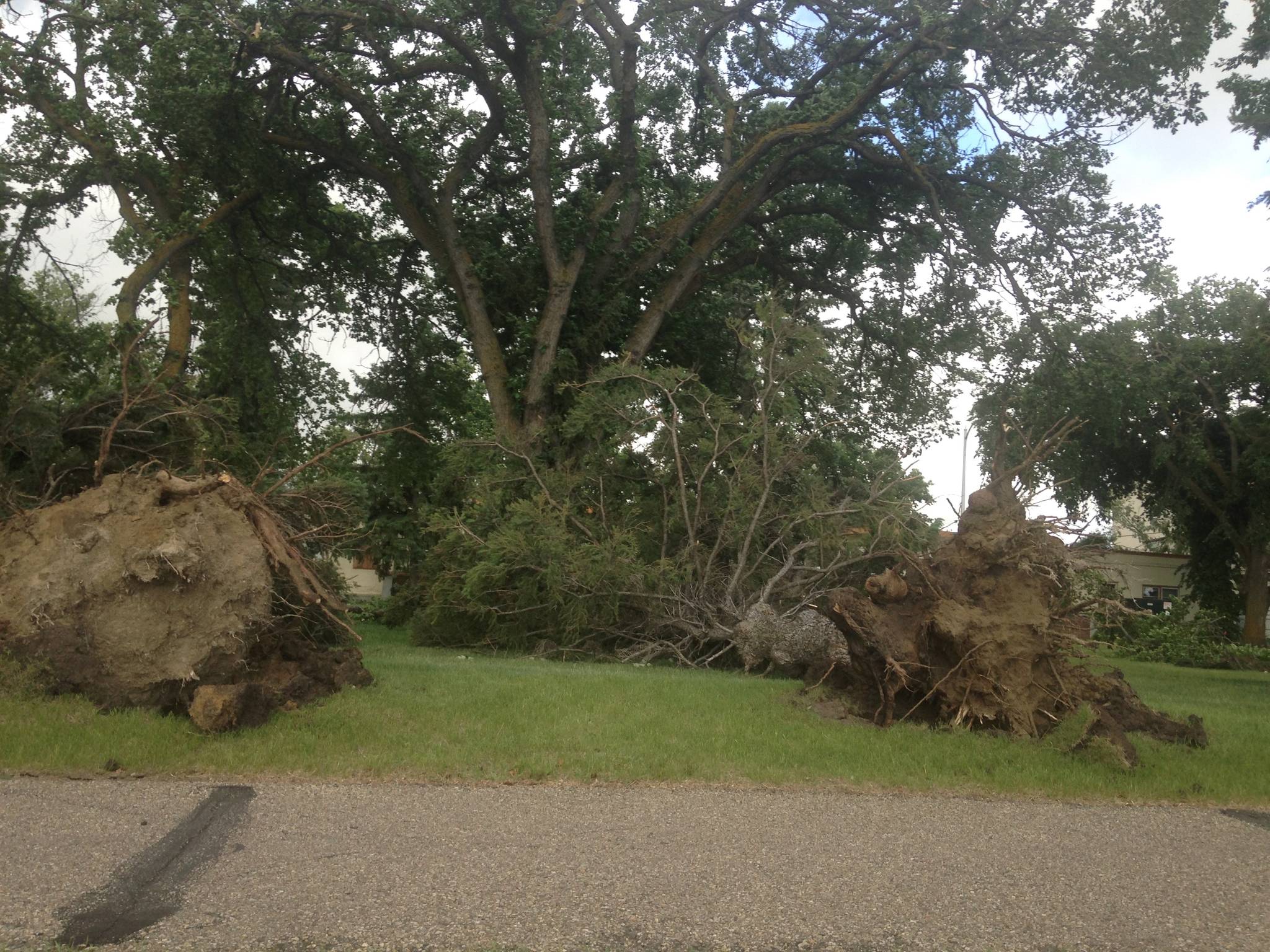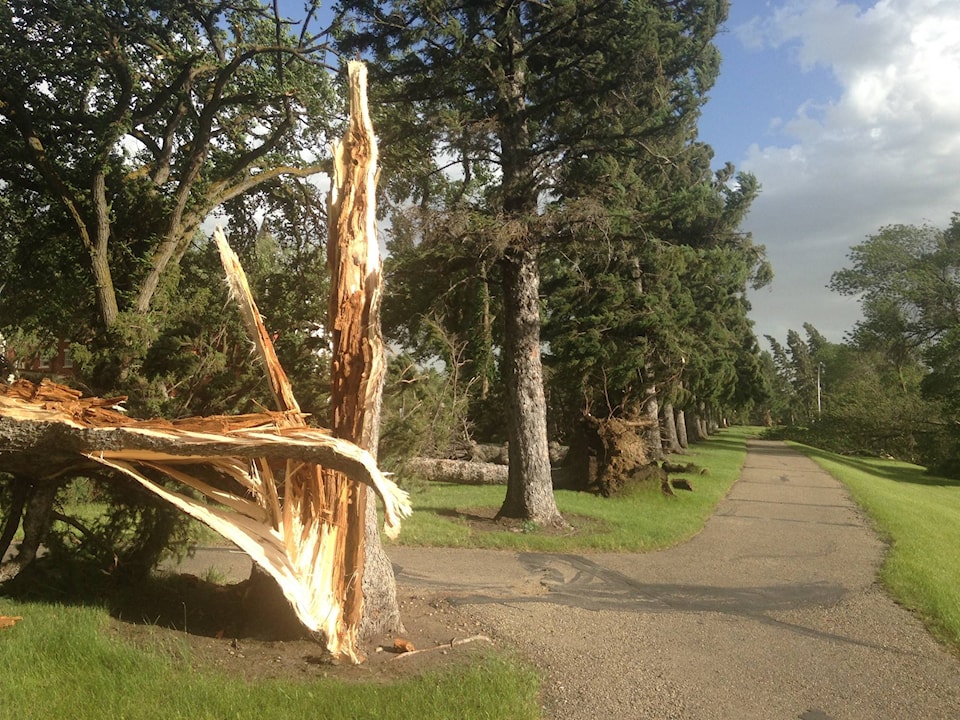Winds gusted to 111km/h during Tuesday night’s devastating windstorm.
Those peak gusts were recorded at Red Deer Airport about 7:10 p.m., said Environment Canada meteorologist Dan Kulak.
At Maskwacis, a gust of 124 km/h was recorded at 6:10 p.m.
The cause of all the damage is what is known as a straight-line wind, which are not uncommon offshoots of the severe thunderstorms that routinely roll through this part of Alberta.
“I would say, as a meteorological event, it’s not overly rare,” said Kulak. “The only thing that’s unique is it affected a very broad area.”
What also makes the windstorm stand out is that it hit a heavily populated area. Similar storms blast through Alberta occasionally but are hardly noticed because they are in remote areas.
It’s pattern was also typical. A huge black cloud with high winds flowing outside of it as it moves across the landscape.
As ferocious as the winds were, they were not even close to what nature can produce. In 2008, a straight-line wind produced a gust of 216 km/h south of Medicine Hat.
Environment Canada could see that something was brewing and issued a thunderstorm weather watch at 11:36 a.m. Shortly after 7 p.m., that was upgraded to a weather warning for Red Deer and area.
Tuesday’s storm developed in the northern Foothills and began dumping large hail stones along its route. Buck Lake and Pigeon Lake reported toonie- and loonie-sized hailstones.
As the storms moved east they formed into a line and created the wide swath of high winds recorded throughout Central Alberta. The storm continued southeast, blowing into Saskatchewan about midnight.
Kulak said storms at this time of year are not unusual.
“It was the announcement of summer in some ways,” he said. “We always say that’s when the storm season begins.”
While tornadoes tend to grab a lot of attention, straight winds are statistically more dangerous and damaging. Most dangerous of all, by far, is lightning.
Alberta will see about a dozen tornadoes in the summer, and about 400,000 lightning strikes.

